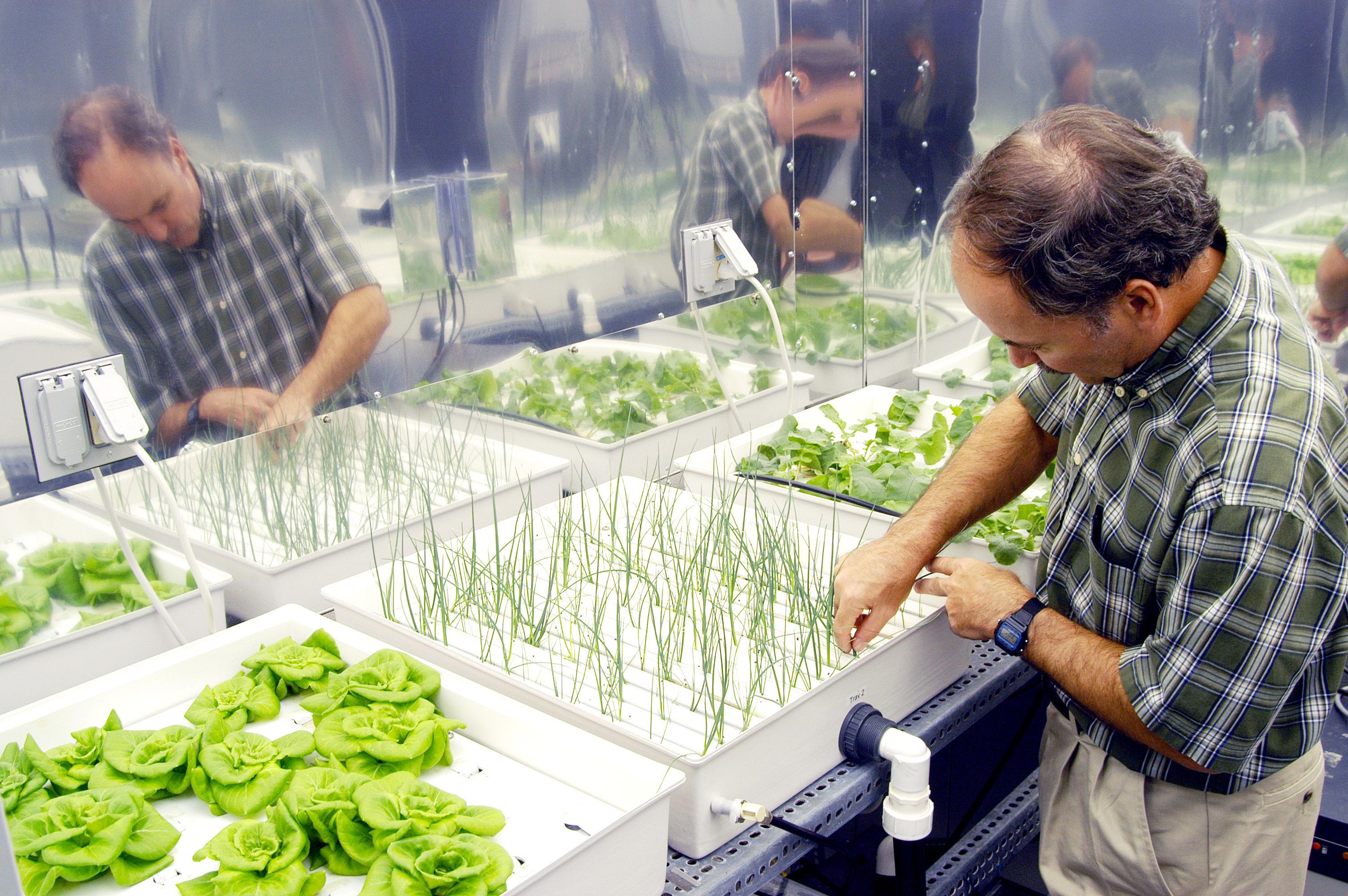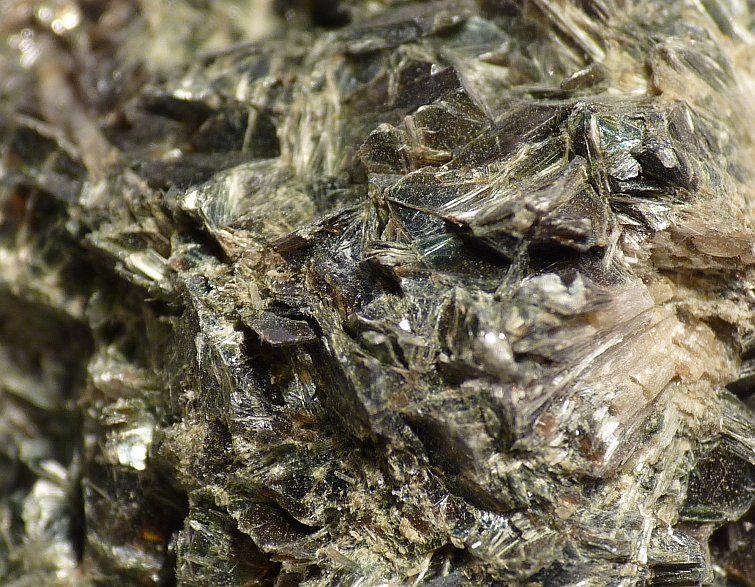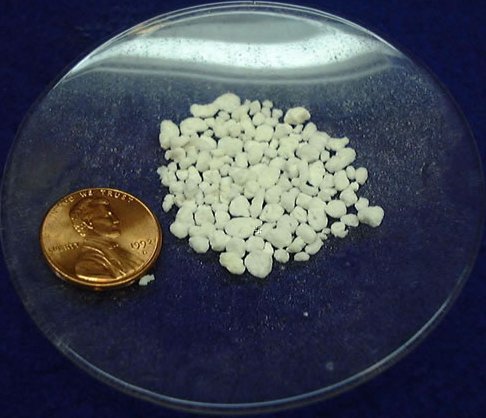|
Passive Hydroponics
Passive hydroponics, semi-hydroponics or passive subirrigation is a method of growing plants without soil, peat moss, or bark. Methods Instead an inert porous medium transports water and fertilizer to the roots by capillary action. Water and fertilizer are held in a reservoir and conducted to the roots as necessary, reducing labor and providing a constant supply of water to the roots. In the simplest method, the pot sits in a shallow solution of fertilizer and water or on a capillary mat saturated with nutrient solution. Since routine maintenance is much simplified, passive hydroponics can reduce the labor required to maintain a large collection of plants. Semi-Hydroponics Semi-Hydroponics (Semi-Hydro or S/H) was the first passive hydroponic technique utilized for orchids, originating in the early 1990's, using Lightweight Expanded Clay Aggregate (LECA) as a medium in sold-bottomed containers, into which one or two, small-diameter holes were placed in the sidewall, setting ... [...More Info...] [...Related Items...] OR: [Wikipedia] [Google] [Baidu] |
Hydroponics
Hydroponics is a type of horticulture and a subset of hydroculture which involves growing plants, usually crops or medicinal plants, without soil, by using water-based mineral nutrient solutions in aqueous solvents. Terrestrial or aquatic plants may grow with their roots exposed to the nutritious liquid or in addition, the roots may be mechanically supported by an inert medium such as perlite, gravel, or other substrates. Despite inert media, roots can cause changes of the rhizosphere pH and root exudates can affect rhizosphere biology and physiological balance of the nutrient solution by secondary metabolites. Transgenic plants grown hydroponically allow the release of pharmaceutical proteins as part of the root exudate into the hydroponic medium. The nutrients used in hydroponic systems can come from many different organic or inorganic sources, including fish excrement, duck manure, purchased chemical fertilizers, or artificial nutrient solutions. Plants are commonl ... [...More Info...] [...Related Items...] OR: [Wikipedia] [Google] [Baidu] |
Epiphyte
An epiphyte is an organism that grows on the surface of a plant and derives its moisture and nutrients from the air, rain, water (in marine environments) or from debris accumulating around it. The plants on which epiphytes grow are called phorophytes. Epiphytes take part in nutrient cycles and add to both the diversity and biomass of the ecosystem in which they occur, like any other organism. They are an important source of food for many species. Typically, the older parts of a plant will have more epiphytes growing on them. Epiphytes differ from parasites in that they grow on other plants for physical support and do not necessarily affect the host negatively. An organism that grows on another organism that is not a plant may be called an epibiont. Epiphytes are usually found in the temperate zone (e.g., many mosses, liverworts, lichens, and algae) or in the tropics (e.g., many ferns, cacti, orchids, and bromeliads). Epiphyte species make good houseplants due to their minimal wat ... [...More Info...] [...Related Items...] OR: [Wikipedia] [Google] [Baidu] |
Aeroponics
Aeroponics is the process of growing plants in the air or mist environment without soil or an aggregate medium. The word "aeroponic" is derived from the Greek meanings of ''aer'' ("air") and ''ponos'' ("labour"). It is a subset of hydroponics, since water is used in aeroponics to transmit nutrients. Methods The basic principle of aeroponic growing is to grow plants suspended in a closed or semi-closed environment by spraying the plant's dangling roots and lower stem with an atomized or sprayed, nutrient-rich water solution.Stoner, R.J. and J.M. Clawson (1997-1998). ''A High Performance, Gravity Insensitive, Enclosed Aeroponic System for Food Production in Space.'' Principal Investigator, NASA SBIR NAS10-98030. The leaves and crown, often called the canopy, extend above. The roots of the plant are separated by the plant support structure. Often, closed-cell foam is compressed around the lower stem and inserted into an opening in the aeroponic chamber, which decreases labor an ... [...More Info...] [...Related Items...] OR: [Wikipedia] [Google] [Baidu] |
Rock Wool
Mineral wool is any fibrous material formed by spinning or drawing molten mineral or rock materials such as slag and ceramics. Applications of mineral wool include thermal insulation (as both structural insulation and pipe insulation), filtration, soundproofing, and hydroponic growth medium. Naming Mineral wool is also known as ''mineral fiber'', ''mineral cotton'', ''mineral fibre'', ''man-made mineral fibre'' (MMMF), and ''man-made vitreous fiber'' (MMVF). Specific mineral wool products are ''stone wool'' and ''slag wool''. Europe also includes glass wool which, together with ceramic fiber, are entirely artificial fibers that can be made into different shapes and are spiky to touch. History Slag wool was first made in 1840 in Wales by Edward Parry, "but no effort appears to have been made to confine the wool after production; consequently it floated about the works with the slightest breeze, and became so injurious to the men that the process had to be abandoned". ... [...More Info...] [...Related Items...] OR: [Wikipedia] [Google] [Baidu] |
Diatomaceous Earth
Diatomaceous earth (), diatomite (), or kieselgur/kieselguhr is a naturally occurring, soft, siliceous sedimentary rock that can be crumbled into a fine white to off-white powder. It has a particle size ranging from more than 3 μm to less than 1 mm, but typically 10 to 200 μm. Depending on the granularity, this powder can have an abrasive feel, similar to pumice powder, and has a low density as a result of its high porosity. The typical chemical composition of oven-dried diatomaceous earth is 80–90% silica, with 2–4% alumina (attributed mostly to clay minerals), and 0.5–2% iron oxide. Diatomaceous earth consists of the fossilized remains of diatoms, a type of hard-shelled microalgae. It is used as a filtration aid, mild abrasive in products including metal polishes and toothpaste, mechanical insecticide, absorbent for liquids, matting agent for coatings, reinforcing filler in plastics and rubber, anti-block in plastic films, porous support for c ... [...More Info...] [...Related Items...] OR: [Wikipedia] [Google] [Baidu] |
Vermiculite
Vermiculite is a hydrous phyllosilicate mineral which undergoes significant expansion when heated. Exfoliation occurs when the mineral is heated sufficiently, and commercial furnaces can routinely produce this effect. Vermiculite forms by the weathering or hydrothermal alteration of biotite or phlogopite. http://www.mindat.org/min-4170.html Mindat.org Large commercial vermiculite mines currently exist in the United States, Russia, South Africa, China, and Brazil. Occurrence Vermiculite was first described in 1824 for an occurrence in Millbury, Massachusetts. Its name is from Latin , "to breed worms", for the manner in which it exfoliates when heated. It typically occurs as an alteration product at the contact between felsic and mafic or ultramafic rocks such as pyroxenites and dunites. It also occurs in carbonatites and metamorphosed magnesium-rich limestone. Associated mineral phases include: corundum, apatite, serpentine, and talc. It occurs interlayered with chlorite, bio ... [...More Info...] [...Related Items...] OR: [Wikipedia] [Google] [Baidu] |
Perlite
Perlite is an amorphous volcanic glass that has a relatively high water content, typically formed by the hydration of obsidian. It occurs naturally and has the unusual property of greatly expanding when heated sufficiently. It is an industrial mineral, suitable "as ceramic flux to lower the sintering temperature", and a commercial product useful for its low density after processing. Properties Perlite softens when it reaches temperatures of . Water trapped in the structure of the material vaporises and escapes, and this causes the expansion of the material to 7–16 times its original volume. The expanded material is a brilliant white, due to the reflectivity of the trapped bubbles. Unexpanded ("raw") perlite has a bulk density around 1100 kg/m3 (1.1 g/cm3), while typical expanded perlite has a bulk density of about 30–150 kg/m3 (0.03–0.150 g/cm3). Typical analysis *70–75% silicon dioxide: SiO2 *12–15% aluminium oxide: Al2O3 *3–4% sodium oxide: Na2O *3–5 ... [...More Info...] [...Related Items...] OR: [Wikipedia] [Google] [Baidu] |
Coco Peat
Coir (), also called coconut fibre, is a natural fibre extracted from the outer husk of coconut and used in products such as floor mats, doormats, brushes, and mattresses. Coir is the fibrous material found between the hard, internal shell and the outer coat of a coconut. Other uses of brown coir (made from ripe coconut) are in upholstery padding, sacking and horticulture. White coir, harvested from unripe coconuts, is used for making finer brushes, string, rope and fishing nets. It has the advantage of not sinking, so can be used in long lengths in deep water without the added weight dragging down boats and buoys. Coir must not be confused with coir pith, which is the powdery and spongy material resulting from the processing of the coir fibre. Coir fibre is locally named 'coprah' in some countries, adding to confusion. Pith is chemically similar to coir, but contains much shorter fibers. The name coco peat may refer either to coir or the pith or a mixture, as both have go ... [...More Info...] [...Related Items...] OR: [Wikipedia] [Google] [Baidu] |
Expanded Clay Aggregate
Lightweight expanded clay aggregate (LECA) or expanded clay (exclay) is a lightweight aggregate made by heating clay to around in a rotary kiln. The yielding gases expand the clay by thousands of small bubbles forming during heating producing a honeycomb structure. LECA has an approximately round or potato shape due to circular movement in the kiln and is available in different sizes and densities. LECA is used to make lightweight concrete products and other uses. History LECA was developed about 1917 in Kansas City, Missouri, to the production in a rotary kiln of a patented expanded aggregate known as Haydite which was used in the construction of SS Selma, an ocean-going ship launched in 1919. Following in the USA was the development of a series of aggregates known as Gravelite, Perlite, Rocklite, etc. In Europe, LECA commenced in Denmark, Germany, Netherlands, and UK. Characteristics LECA is usually produced in different sizes and densities from up to , commonly 0–4& ... [...More Info...] [...Related Items...] OR: [Wikipedia] [Google] [Baidu] |
Relative Humidity
Humidity is the concentration of water vapor present in the air. Water vapor, the gaseous state of water, is generally invisible to the human eye. Humidity indicates the likelihood for precipitation, dew, or fog to be present. Humidity depends on the temperature and pressure of the system of interest. The same amount of water vapor results in higher relative humidity in cool air than warm air. A related parameter is the dew point. The amount of water vapor needed to achieve saturation increases as the temperature increases. As the temperature of a parcel of air decreases it will eventually reach the saturation point without adding or losing water mass. The amount of water vapor contained within a parcel of air can vary significantly. For example, a parcel of air near saturation may contain 28 g of water per cubic metre of air at , but only 8 g of water per cubic metre of air at . Three primary measurements of humidity are widely employed: absolute, relative, and specific. Ab ... [...More Info...] [...Related Items...] OR: [Wikipedia] [Google] [Baidu] |
Bromeliaceae
The Bromeliaceae (the bromeliads) are a family of monocot Monocotyledons (), commonly referred to as monocots, (Lilianae ''sensu'' Chase & Reveal) are grass and grass-like flowering plants (angiosperms), the seeds of which typically contain only one Embryo#Plant embryos, embryonic leaf, or cotyledon. Th ... flowering plants of about 80 genera and 3700 known species, native mainly to the Tropics, tropical Americas, with several species found in the American subtropics and one in tropical west Africa, ''Pitcairnia feliciana''. It is among the basal (phylogenetics), basal families within the Poales and is the only family within the order that has Septal nectary, septal nectaries and Ovary (plants), inferior ovaries.Judd, Walter S. Plant systematics a phylogenetic approach. 3rd ed. Sunderland, MA: Sinauer Associates, Inc., 2007. These Ovary (plants), inferior ovaries characterize the Bromelioideae, a subfamily of the Bromeliaceae. The family includes both epiphytes, such as Spanis ... [...More Info...] [...Related Items...] OR: [Wikipedia] [Google] [Baidu] |











.jpg)